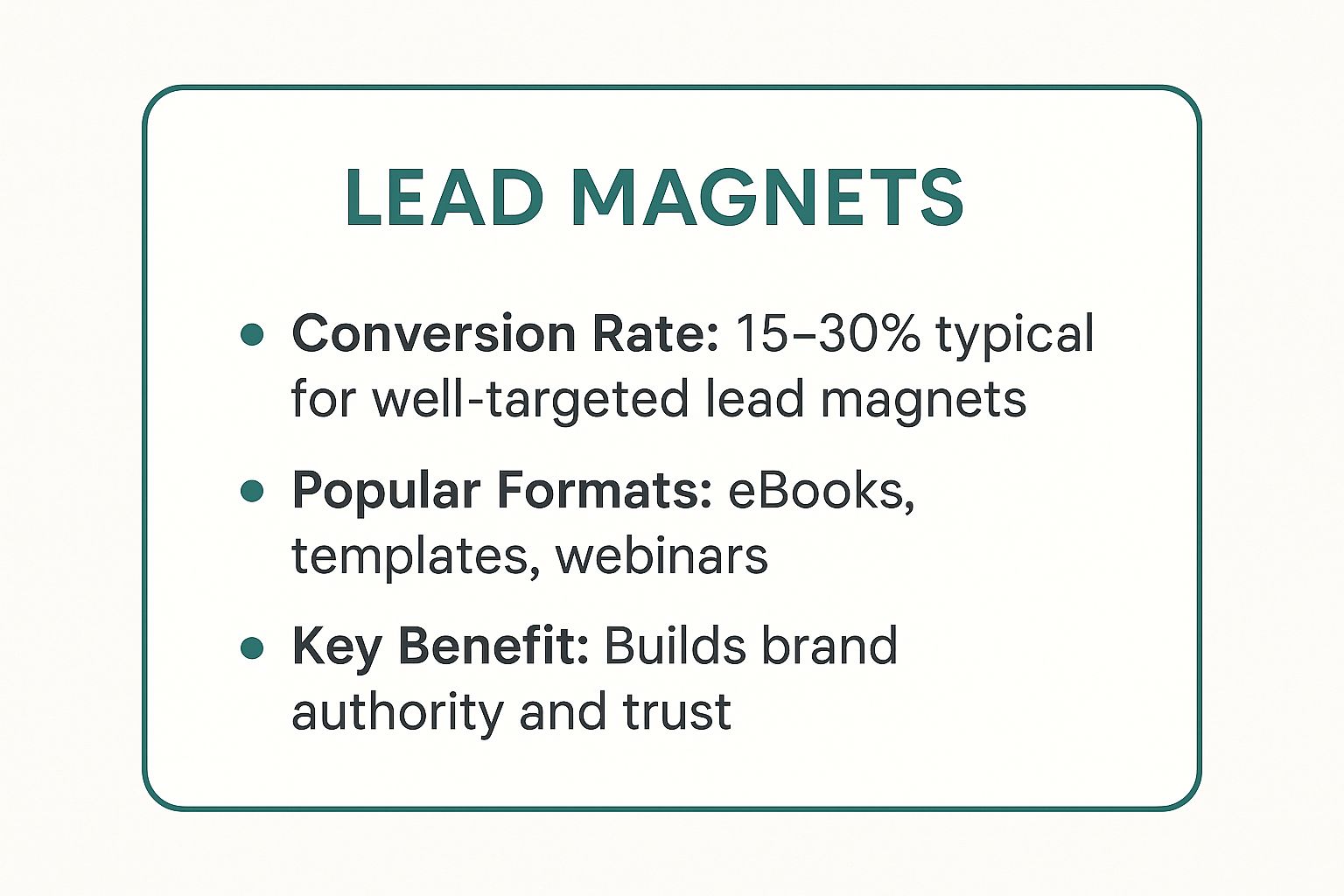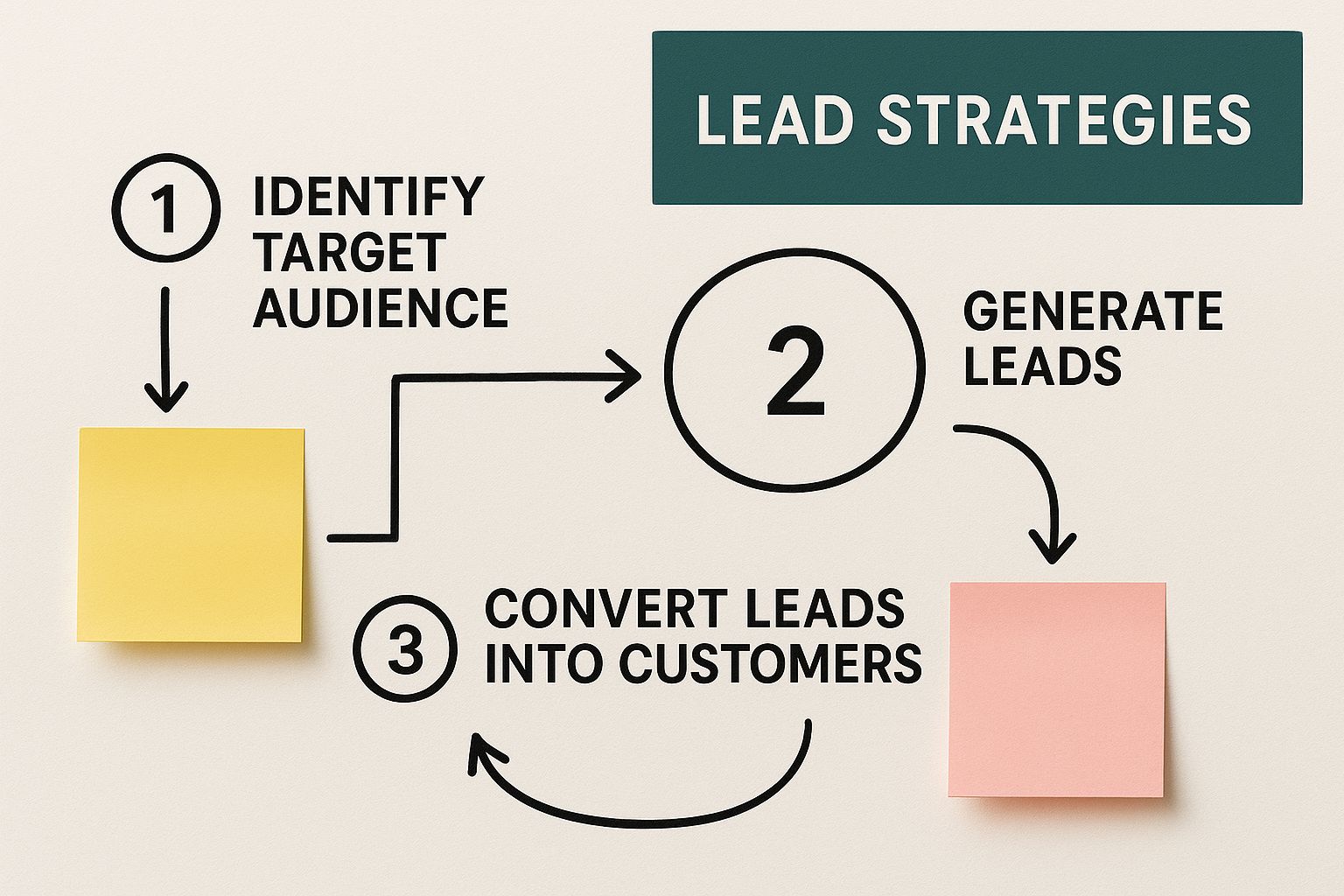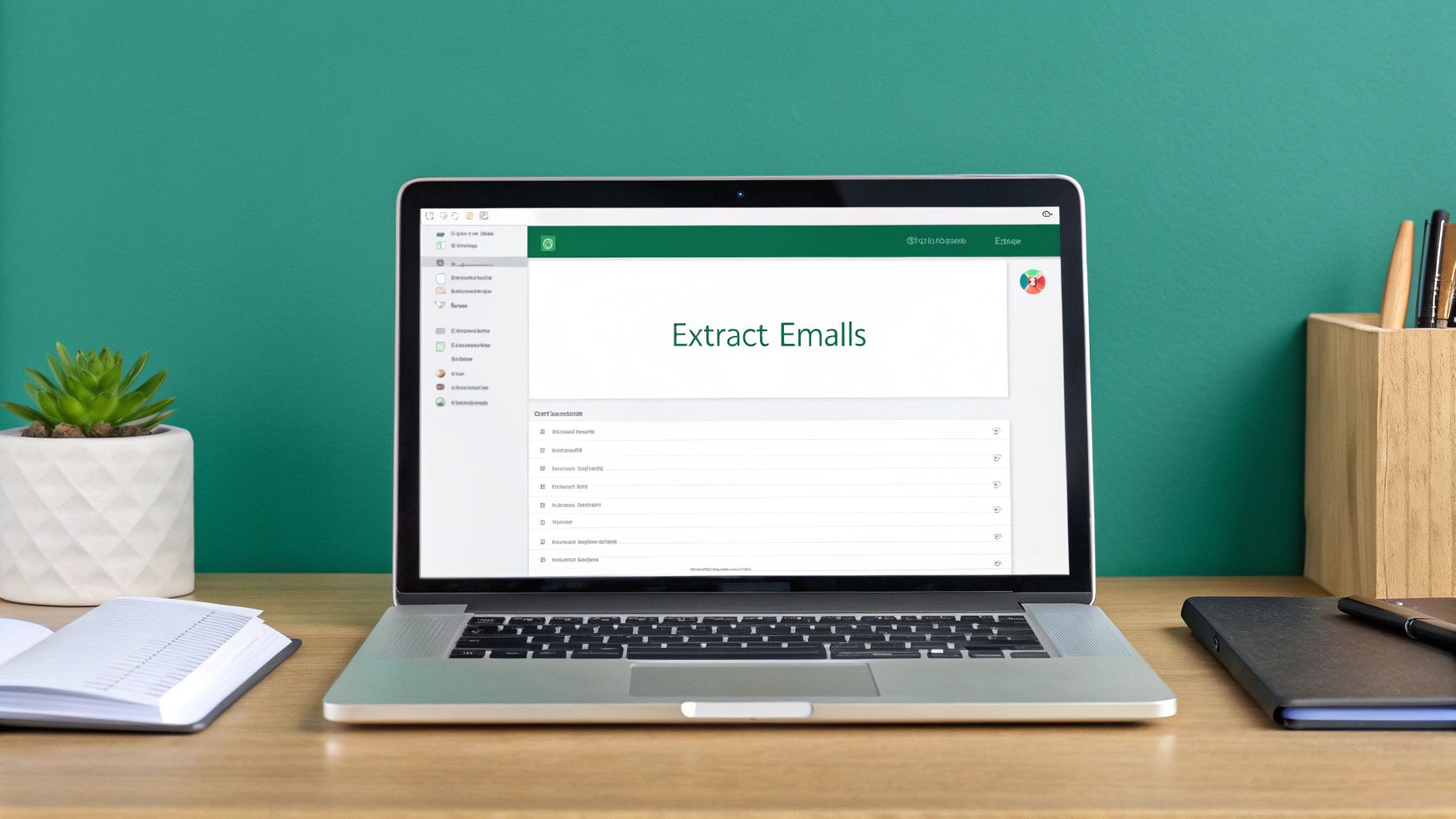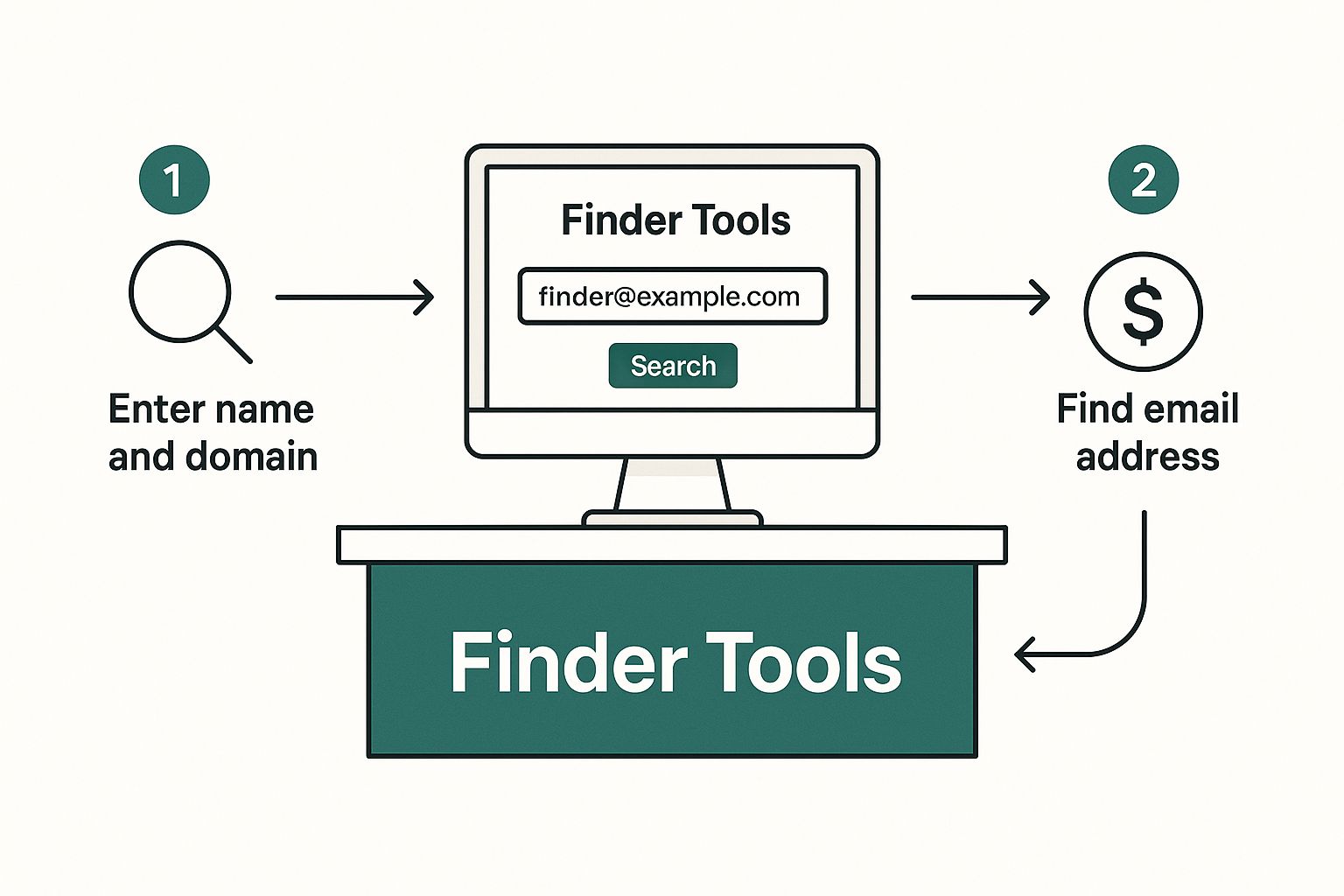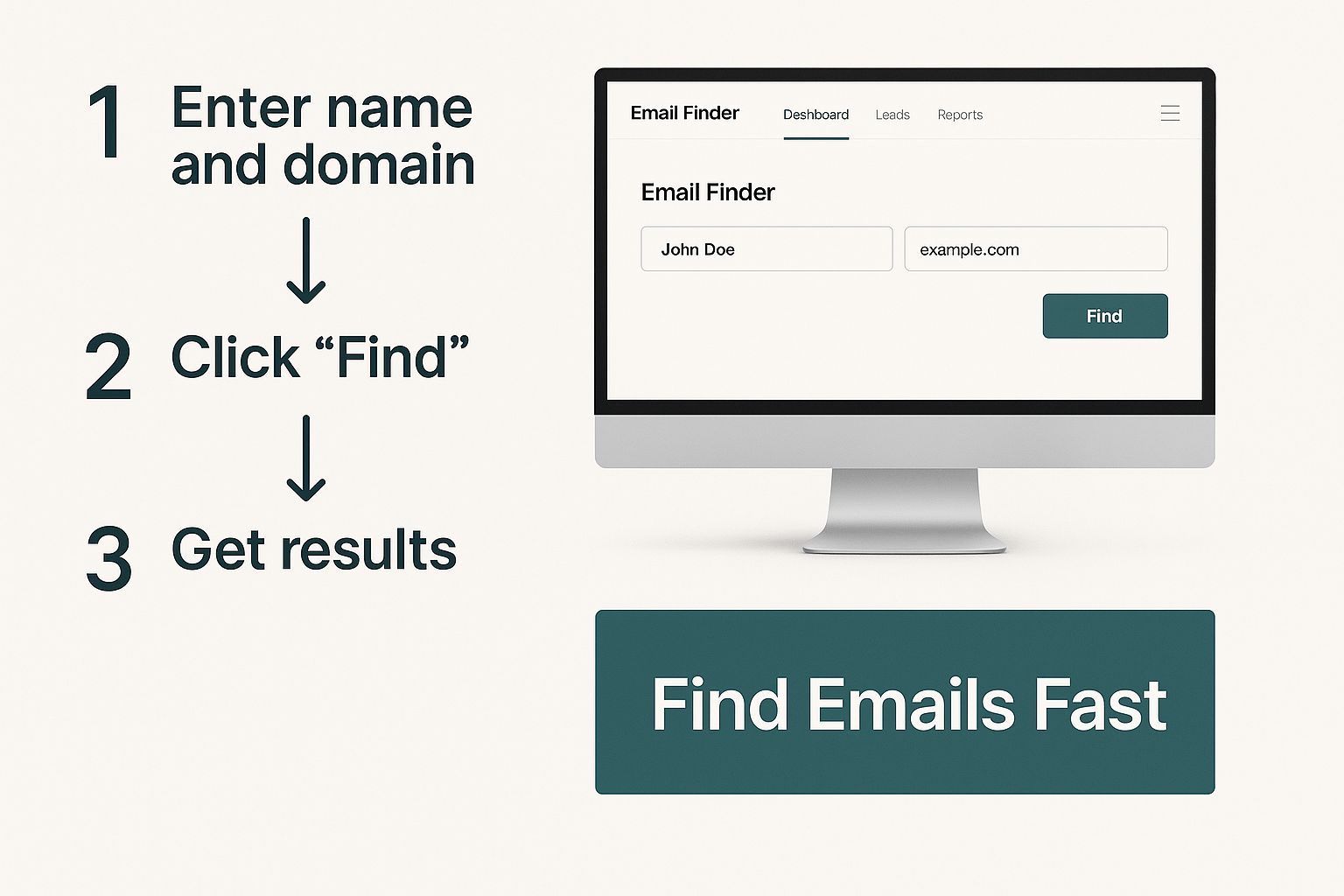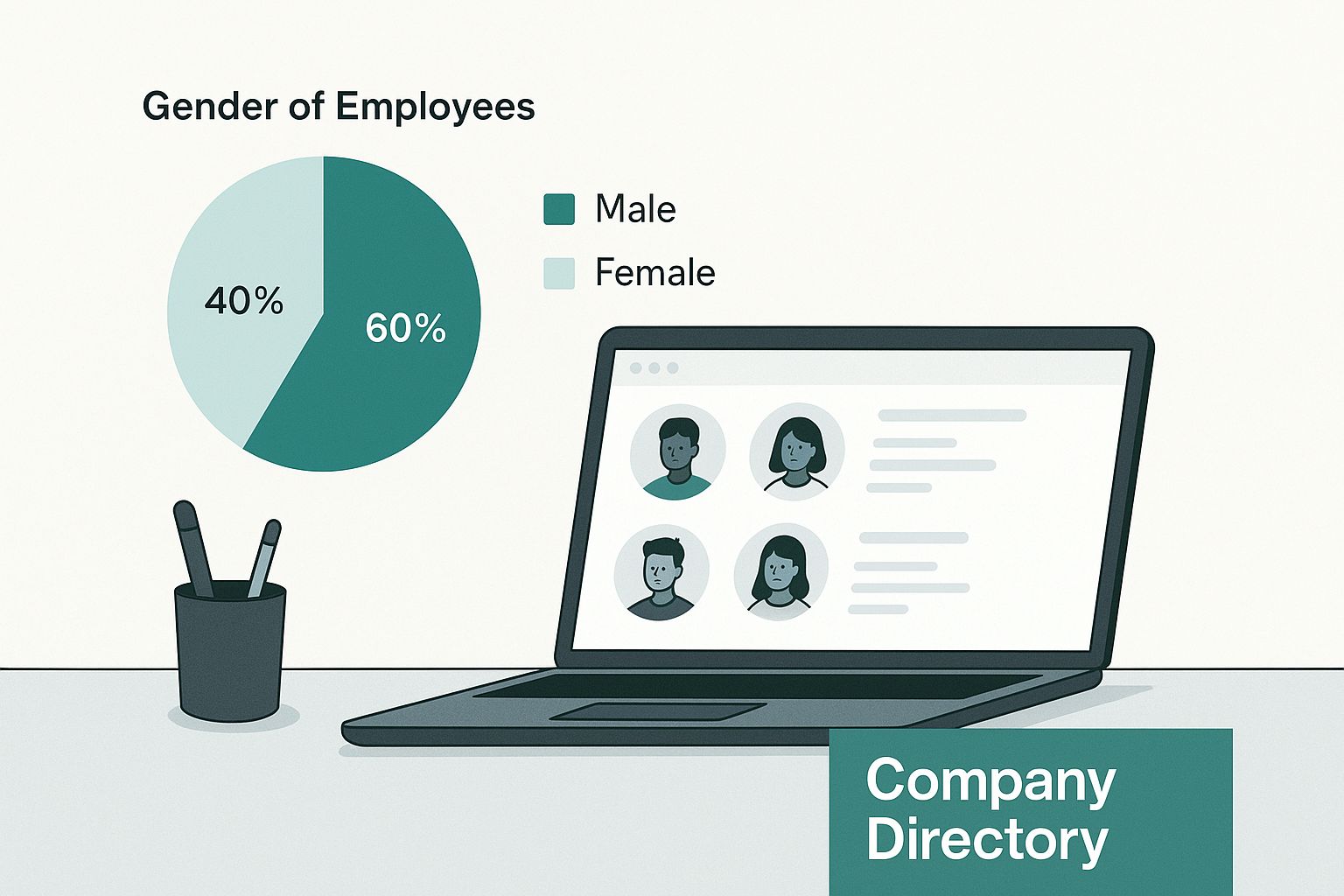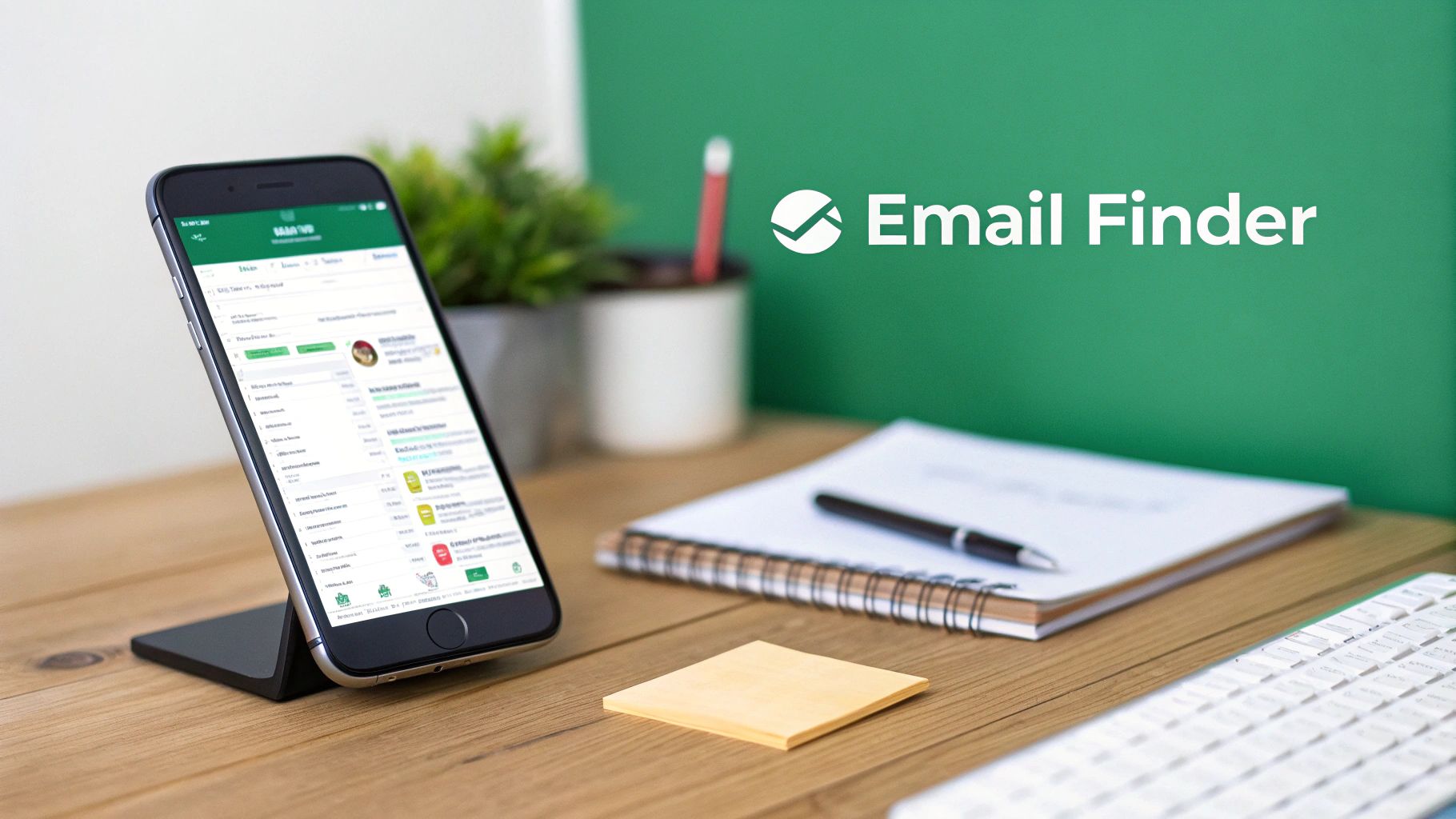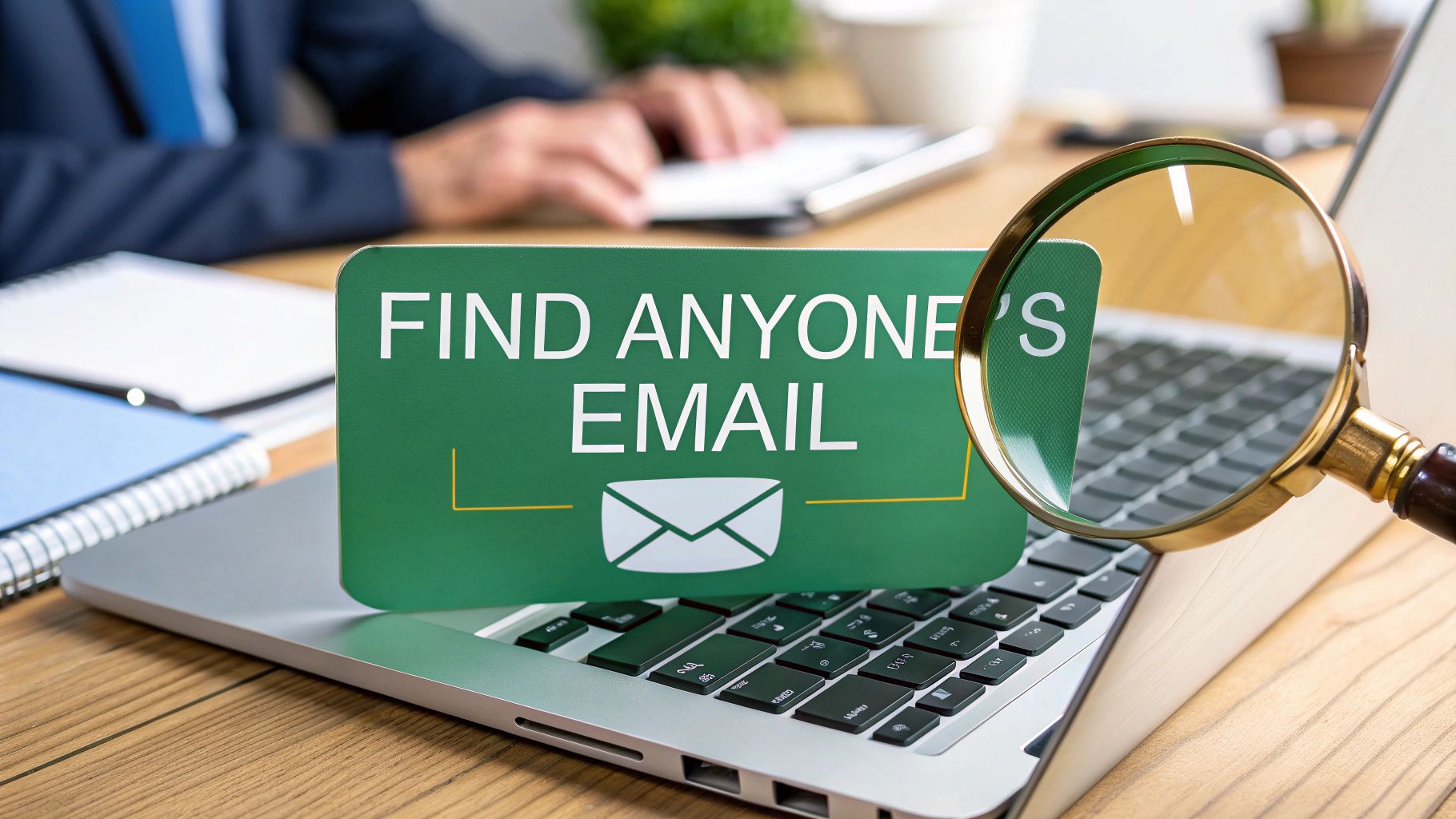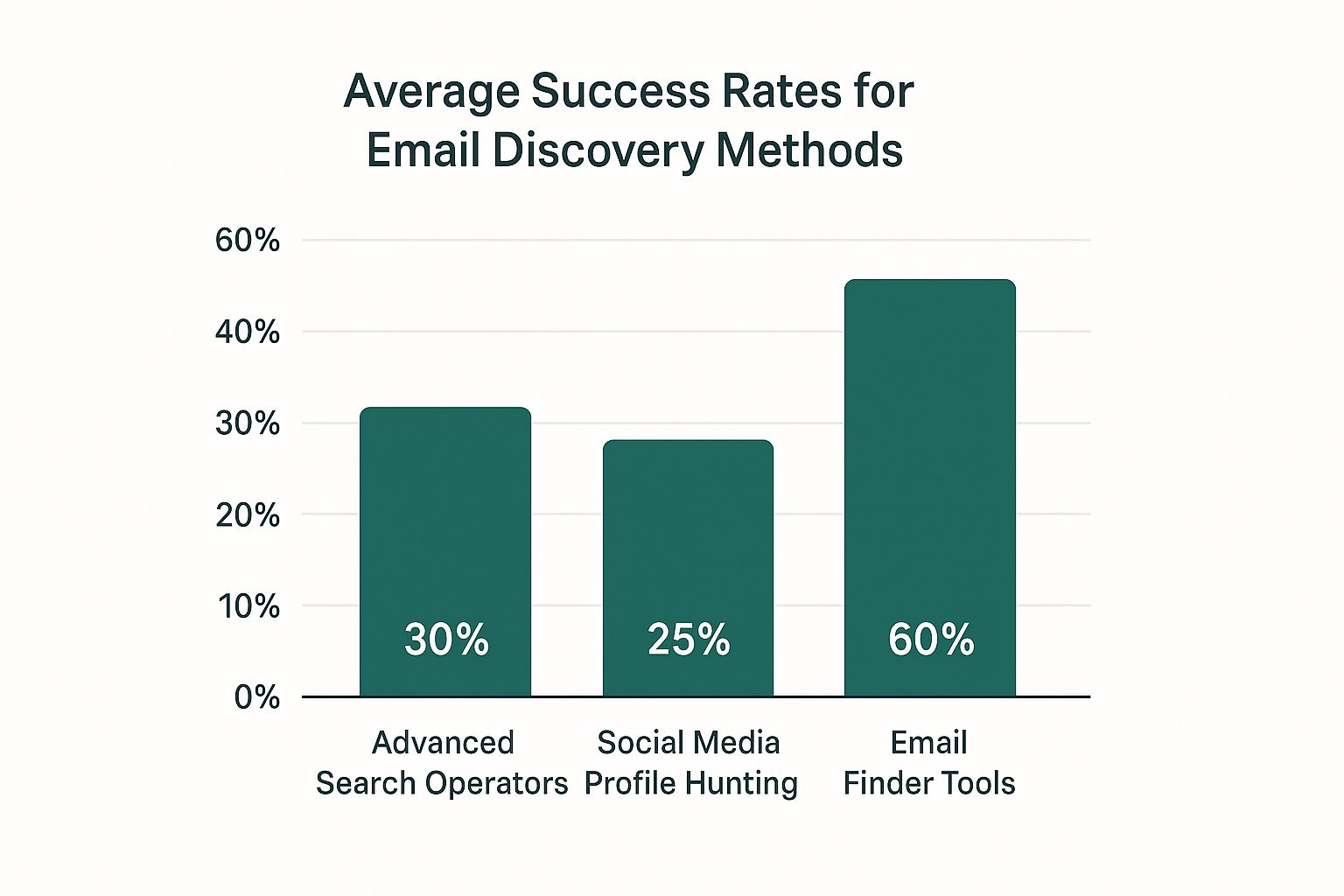In today's competitive landscape, a steady stream of high-quality leads is the lifeblood of any successful business. Manually prospecting, capturing, and nurturing potential customers is a slow, inefficient process that drains valuable resources. The right technology transforms this challenge into a strategic advantage, automating repetitive tasks and empowering your team to focus on building relationships and closing deals.
This comprehensive guide cuts through the noise to reveal the 12 best lead generation tools designed to fuel your growth. We'll move beyond generic feature lists and dive deep into practical use cases, honest limitations, and critical implementation advice. Our goal is to help you build a powerful, scalable lead generation engine tailored to your specific needs.
Each tool profiled includes a detailed breakdown, screenshots, and direct links to help you evaluate your options quickly. Whether you need to find accurate contact data with tools like Apollo.io and EmailScout, build high-converting landing pages with Unbounce, or manage your entire funnel with HubSpot, you'll find the perfect solution here. Let’s find the right tools to supercharge your sales pipeline.
1. EmailScout
EmailScout distinguishes itself as a premier email discovery tool, offering a potent and remarkably accessible solution for professionals aiming to enhance their outreach. This Chrome extension is engineered for efficiency, enabling users to instantly extract email addresses from any website or Google search results with a single click. Its clean, intuitive interface integrates directly into your browsing workflow, drastically reducing the time spent on manual prospecting.
For teams building targeted lists, EmailScout is one of the best lead generation tools available, striking an ideal balance between powerful features and ease of use. It’s a standout choice for anyone from freelancers to enterprise sales teams who need to connect with key decision-makers quickly and reliably.
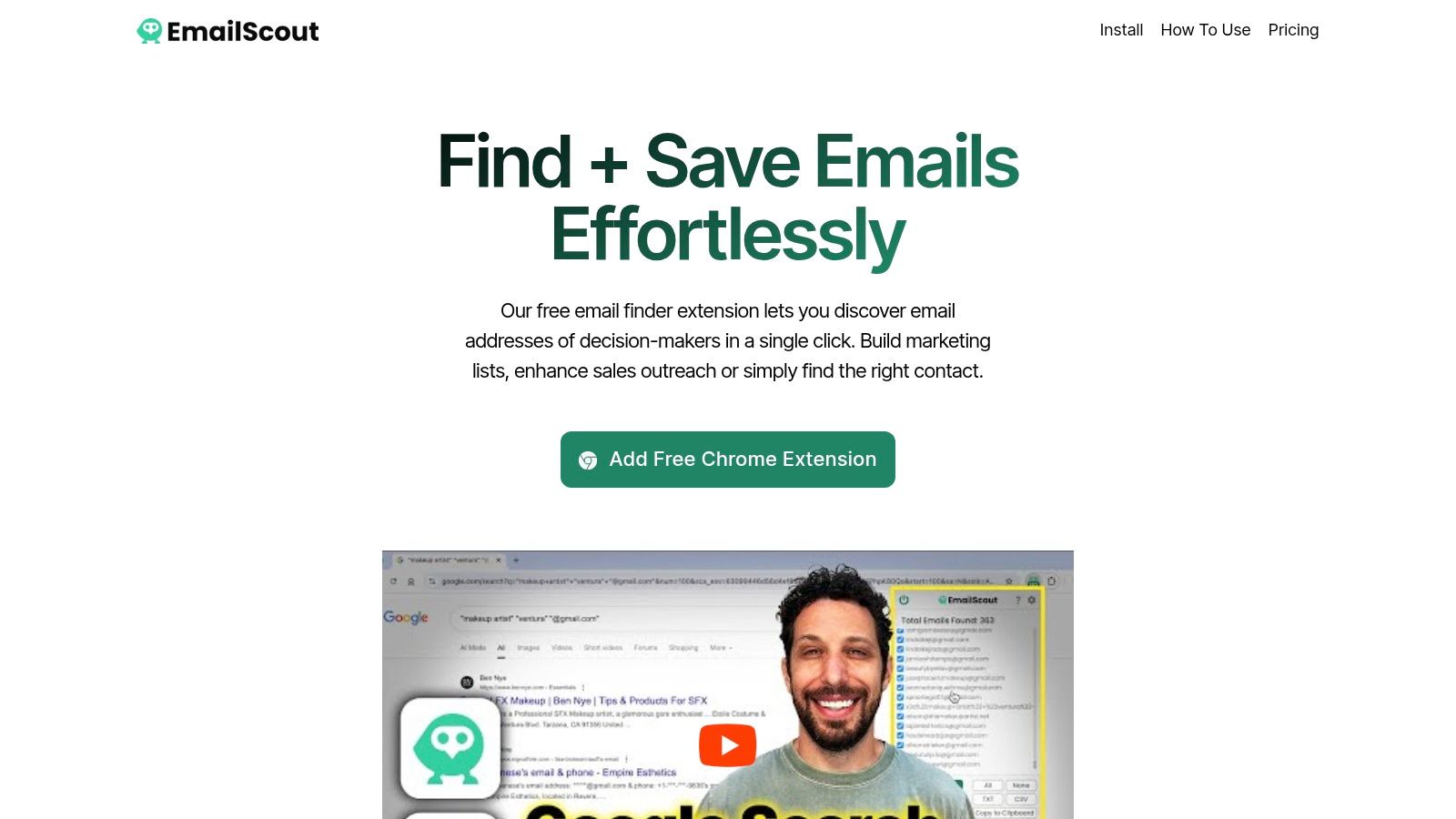
Key Strengths & Use Cases
EmailScout’s primary advantage lies in its generous free plan, which provides unlimited email searches and exports without a monthly cap. This makes it an invaluable asset for startups and small businesses operating on tight budgets.
For power users, the premium plans unlock sophisticated automation features. The AutoSave function automatically collects and saves emails as you browse, eliminating repetitive manual work. The URL Explorer is a game-changer for large-scale campaigns, allowing you to paste up to 1,500 URLs to extract verified email contacts in bulk.
Best For:
- Sales Professionals: Quickly find direct contact information for prospects on corporate websites or LinkedIn.
- Digital Marketers: Build targeted email lists for content promotion or outreach campaigns.
- Entrepreneurs & Startups: Generate initial lead lists without significant upfront investment.
Implementation & Pricing
Getting started is simple: install the Chrome extension, and you can begin finding emails immediately. To maximize efficiency, learn more about strategies for finding company email addresses on EmailScout.io.
| Plan | Key Features | Pricing |
|---|---|---|
| Free | Unlimited manual searches & exports | $0/month |
| Premium | AutoSave, URL Explorer, 5,000 emails/month | Starts at $9/month |
- Pros: Unmatched free plan with unlimited searches, affordable and scalable premium options, user-friendly one-click operation, powerful bulk extraction tools.
- Cons: Automation features like AutoSave and URL Explorer are reserved for paid plans; the free version requires manual exports per site.
Website: EmailScout.io
2. HubSpot – Marketing Hub (plus Breeze Intelligence add-on)
HubSpot’s Marketing Hub is a comprehensive platform designed to unify every aspect of the marketing and sales funnel, from initial attraction to final conversion. More than just a collection of features, it’s an ecosystem that connects lead capture tools like forms, pop-ups, and live chat directly to a powerful CRM. This tight integration means every lead interaction is tracked, scored, and seamlessly passed to sales, making it one of the best lead generation tools for businesses seeking a single source of truth.

The platform’s strength lies in its scalability. A free tier allows startups to build a solid foundation, while paid plans unlock sophisticated visual automation workflows, A/B testing, and advanced reporting. The Breeze Intelligence add-on further enhances this by providing data enrichment and buyer intent signals, helping you prioritize the most engaged prospects. While a fantastic all-in-one solution, be mindful that professional-tier plans require onboarding fees, and costs can increase significantly based on your contact list size and user seats.
| Feature Highlights | Best For | Pricing |
|---|---|---|
| All-in-one CRM, marketing, sales, & service platform | Teams needing a scalable, unified system for growth. | Free plan exists. |
| Visual automation workflows and lead scoring | Automating nurturing sequences and identifying sales-ready leads. | Starts at $800/mo |
| Breeze Intelligence add-on for enrichment and intent | Businesses prioritizing high-quality, intent-driven leads. | (Professional) |
| Website: | https://www.hubspot.com |
3. LinkedIn Sales Navigator
LinkedIn Sales Navigator transforms the world’s largest professional network into a precision-guided prospecting tool. It moves beyond standard LinkedIn searches by offering an advanced filtering engine that allows sales professionals to pinpoint ideal customer profiles with unparalleled accuracy. By leveraging real-time data on job changes, company growth, and shared connections, it provides the context needed to turn a cold outreach into a warm conversation, making it one of the best lead generation tools for B2B social selling.
The platform’s true power lies in its AI-driven insights and activity alerts, which notify you of key buying signals and opportunities to engage. Higher-tier plans introduce features like TeamLink for identifying warm introduction paths and CRM integrations for a seamless workflow. While its data is incredibly current, be aware that exporting leads can be restrictive without third-party tools, and key features like CRM sync are locked behind the most expensive plan. For those looking to maximize their outreach efforts, it's possible to scrape LinkedIn contacts from Google Search to build targeted lists.
| Feature Highlights | Best For | Pricing |
|---|---|---|
| Advanced lead & account search with 50+ filters | B2B sales teams needing highly specific prospect targeting. | Starts at $99/mo |
| Real-time alerts on lead and company activity | Identifying timely engagement opportunities and buying signals. | (Core) |
| TeamLink for warm intro visibility & CRM sync | Sales organizations focused on relationship-based selling. | (Advanced Plus) |
| Website: | https://business.linkedin.com/sales-solutions/sales-navigator |
4. ZoomInfo – SalesOS
ZoomInfo’s SalesOS is an enterprise-grade B2B intelligence platform built for sales and marketing teams that need highly accurate and extensive contact and company data. It excels at providing direct-dial phone numbers, verified email addresses, and detailed organizational charts, making it a go-to resource for outbound prospecting. The platform’s true power is unlocked when combining this data with its advanced features like buyer intent signals and website visitor identification, which helps teams prioritize accounts actively researching their solutions.

This tool is a powerhouse for account-based marketing (ABM) and high-volume sales development representative (SDR) workflows. Native integrations with major CRMs and sales engagement platforms like Salesforce and Outreach streamline the process of exporting contacts and enriching existing records. While its data breadth is a significant advantage, ZoomInfo comes with a high price tag, often requiring a substantial annual commitment and negotiation. The lack of transparent pricing means its total cost can be a significant investment best suited for mid-market and enterprise-level organizations looking for one of the best lead generation tools to fuel their growth at scale.
| Feature Highlights | Best For | Pricing |
|---|---|---|
| Large North American contact and company database | Outbound sales teams needing accurate direct dials and emails. | Quote-based; |
| Buyer intent signals and organizational charts | ABM campaigns and identifying key decision-makers within accounts. | requires annual |
| WebSights visitor identification and automation | Uncovering and engaging anonymous, high-intent website visitors. | commitment. |
| Website: | https://www.zoominfo.com |
5. Apollo.io
Apollo.io streamlines prospecting by combining a massive B2B contact database with a full suite of sales engagement tools. It’s a powerful platform where you can find verified emails and direct dials for over 275 million contacts, then immediately enroll them in automated email sequences or call them directly from the platform. This tight integration of data and action makes it one of the best lead generation tools for sales teams who need to move quickly from prospect identification to outreach without switching between multiple applications.
The platform’s real value is its all-in-one nature at an accessible price point. A generous free tier gives small teams a running start, while paid plans unlock buying intent data, a power dialer, and A/B testing for sequences. The Chrome extension is particularly effective, allowing users to find contact data directly on LinkedIn profiles and company websites. However, teams must carefully manage their credit usage, as limits apply, and the highest quality data is often concentrated in the US market. Advanced features like call recording are also reserved for higher-tier plans.
| Feature Highlights | Best For | Pricing |
|---|---|---|
| Access to 275M+ contacts with advanced filters | SMB and mid-market sales teams needing integrated data and outreach. | Free plan exists. |
| Email sequencing with A/B testing and a power dialer | Automating cold outreach and improving outbound efficiency. | Starts at $49/user/mo |
| Data enrichment and CRM synchronization | Keeping sales data accurate and up-to-date across platforms. | (billed annually) |
| Website: | https://www.apollo.io |
6. Lusha
Lusha is a B2B contact data provider designed for sales and marketing professionals who need direct, accurate contact information. It operates on a simple, credit-based model, allowing users to reveal direct dials and email addresses for prospects with a click. Its primary strength lies in its browser extension, which integrates seamlessly with LinkedIn and company websites, making it one of the best lead generation tools for enriching prospect lists in real time without leaving your workflow.

The platform is exceptionally easy to adopt, offering a free plan with monthly credits that lets individuals test its accuracy and utility. Paid plans scale predictably, providing more credits and features like team administration and CRM integrations with platforms like Salesforce and HubSpot. While its global contact coverage may be less extensive than some enterprise-level databases, Lusha's focus on ease of use and providing direct phone numbers makes it a powerful asset for teams looking to accelerate their outreach efforts efficiently.
| Feature Highlights | Best For | Pricing |
|---|---|---|
| Credit-based contact reveals (direct dials & emails) | Sales teams needing to quickly find direct prospect information. | Free plan exists. |
| Chrome extension for LinkedIn and company websites | Building and enriching prospect lists directly from the browser. | Starts at $29/mo |
| CRM and Sales Engagement Platform integrations | Streamlining data transfer and automating outreach workflows. | (per user) |
| Website: | https://www.lusha.com |
7. Hunter.io
Hunter.io specializes in one core function and executes it with precision: finding and verifying professional email addresses. Rather than offering a broad suite of multi-channel tools, it provides a streamlined and effective solution for building targeted email lists. Its Domain Search feature allows you to uncover all the email addresses associated with a specific company, making it incredibly efficient for account-based marketing or sales prospecting efforts. This focus on email-first outreach makes it one of the best lead generation tools for teams that prioritize compliant and high-deliverability campaigns.
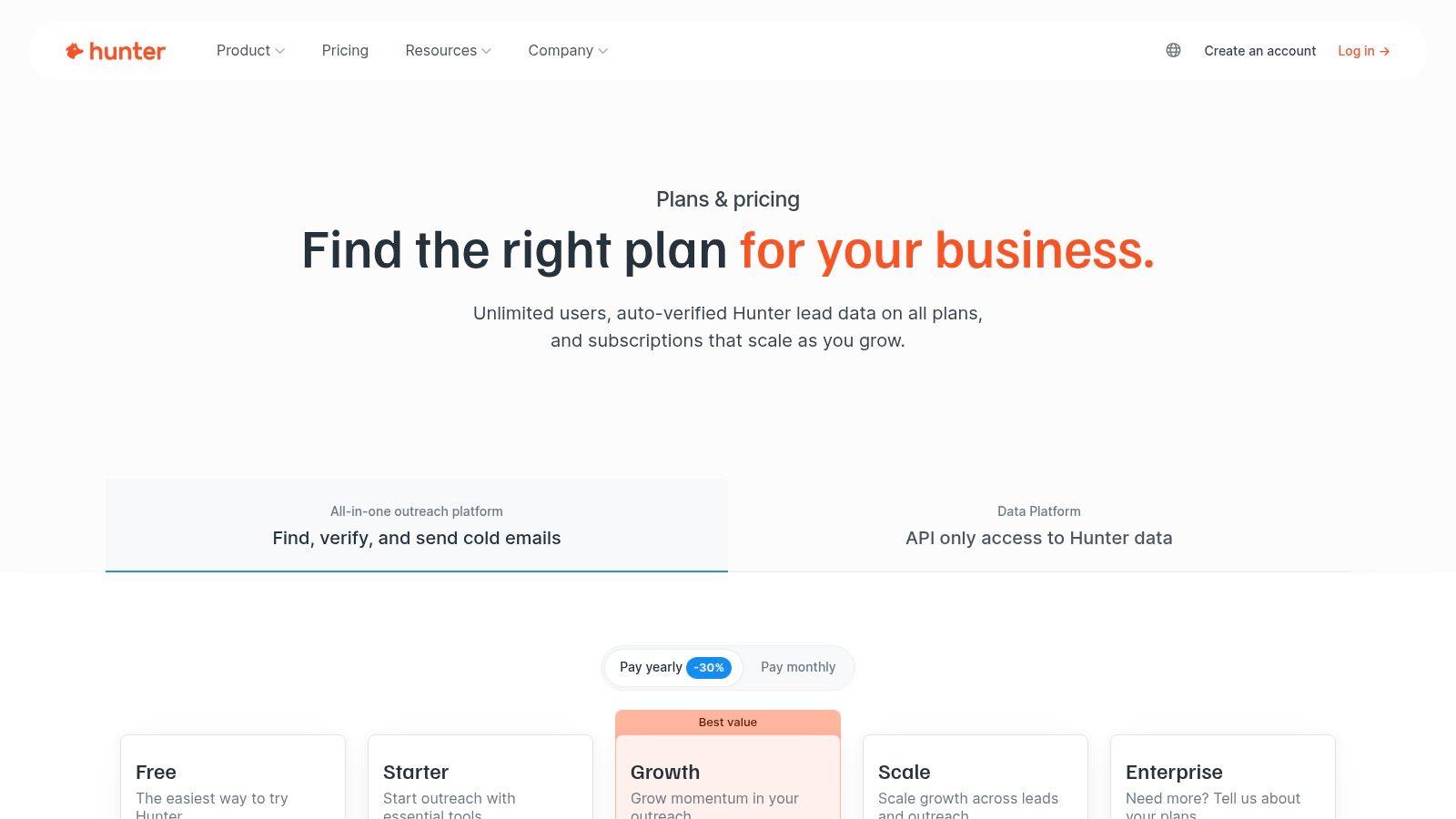
The platform is praised for its transparent pricing and generous free plan, which includes 25 monthly searches and 50 verifications. Paid plans are flexible, offering monthly subscriptions or yearly credit bundles that don't expire. While it excels at email discovery and even includes a lightweight outreach campaign feature, its scope is intentionally narrow. It does not provide phone numbers or deep social data, and its database, while robust, may be smaller than larger, more expensive data vendors. This makes it ideal for startups, freelancers, and sales teams needing an affordable, accurate, and easy-to-use email prospecting tool.
| Feature Highlights | Best For | Pricing |
|---|---|---|
| Domain Search, Email Finder, & Email Verifier | Sales and marketing teams focused on targeted email outreach. | Free plan exists. |
| Built-in outreach with sequences and tracking | Running simple, effective cold email campaigns without a new tool. | Starts at $49/mo |
| Chrome extension, Google Sheets add-on, and API access | Integrating email finding directly into existing workflows. | (for 1,000 credits) |
| Website: | https://hunter.io |
8. RocketReach
RocketReach serves as a powerful contact lookup service designed for sales professionals and recruiters who need accurate email addresses and phone numbers on demand. Its core function is to enrich contact data, turning a name and company into a detailed profile with verified contact information. The platform operates on a simple credit-based system, making it a flexible tool for ad-hoc enrichment tasks without locking users into a complex, feature-heavy sales engagement suite.
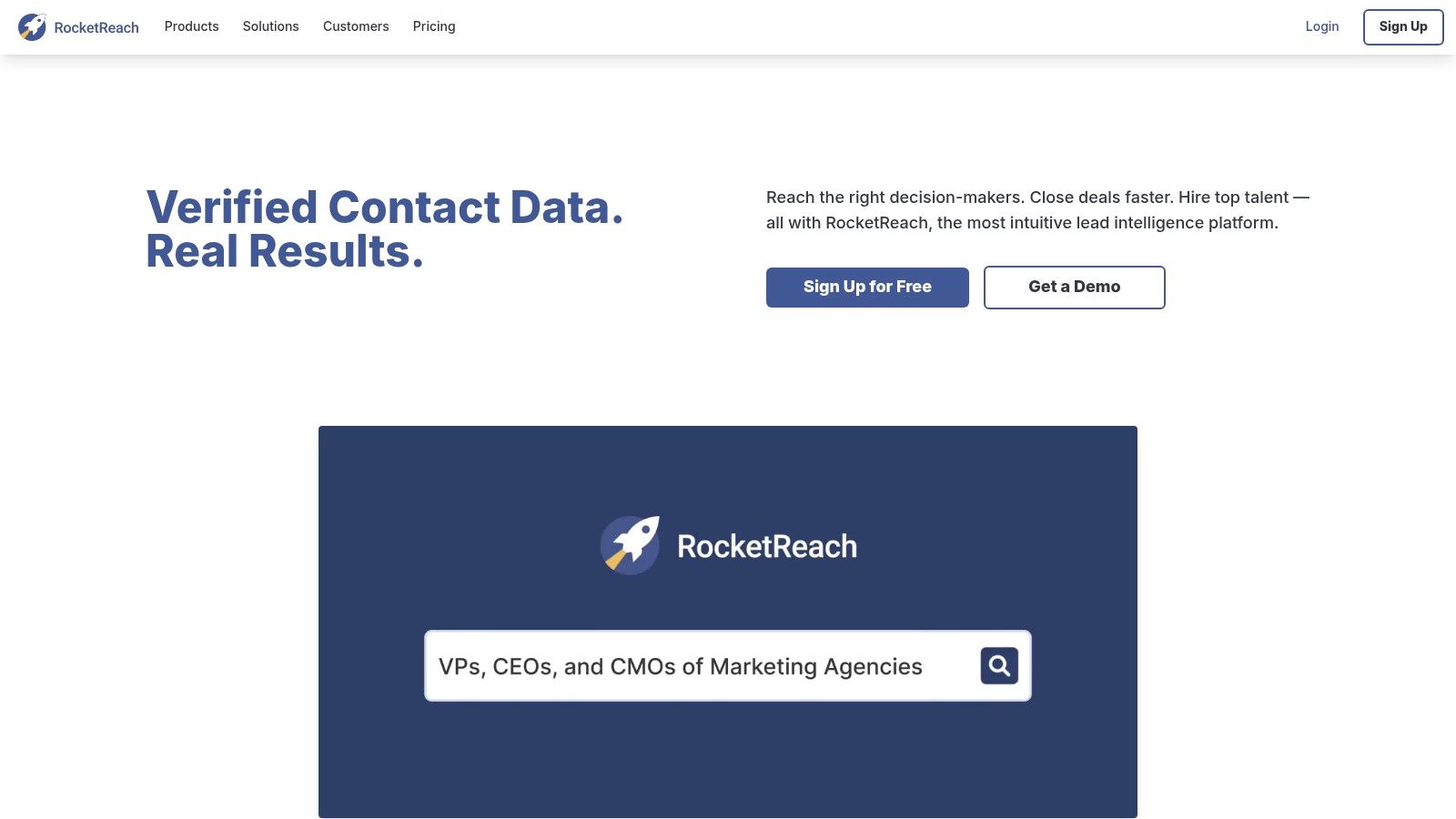
The platform’s real strength lies in its extensive database and user-friendly Chrome extension, which allows for quick lookups directly from LinkedIn profiles or company websites. While it excels at providing raw contact data, it's less of a workflow tool compared to all-in-one solutions. Its integrations with major CRMs and sales platforms like Salesforce and HubSpot, available on higher-tier plans, help bridge this gap. A key consideration is that unused credits don't roll over monthly, so teams must accurately forecast their usage to maximize value from what can be one of the best lead generation tools for data acquisition.
| Feature Highlights | Best For | Pricing |
|---|---|---|
| Person & company search with Chrome extension | Sales teams needing quick contact info from LinkedIn or websites. | Starts at $53/mo (billed annually) |
| Bulk lookups and API access | Automating data enrichment for large lists or custom applications. | (On Ultimate plan) |
| Direct CRM and sales engagement platform integrations | Seamlessly syncing enriched contact data into existing workflows. | (On Pro & Ultimate plans) |
| Website: | https://rocketreach.co |
9. lemlist
lemlist is a multichannel cold outreach platform that excels at blending automation with deep personalization. It goes beyond standard email sequences by integrating LinkedIn actions and calls, allowing you to create comprehensive outreach campaigns that engage prospects across different touchpoints. Its standout feature is an unwavering focus on deliverability, with built-in tools like lemwarm to warm up email accounts and ensure your messages land in the primary inbox, not the spam folder.
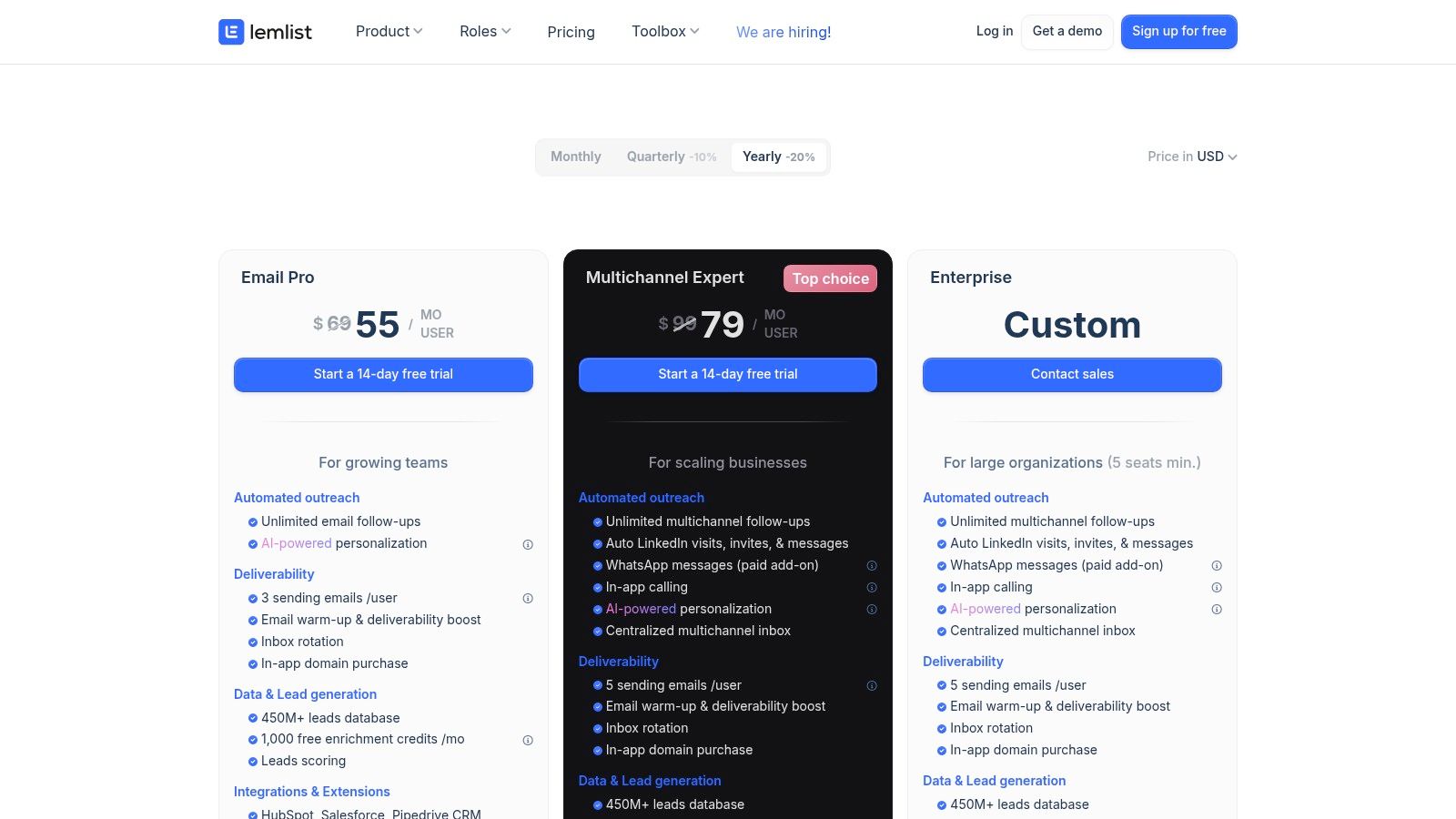
The platform empowers users to craft highly personalized messages at scale using custom variables, including personalized images and videos. While its built-in lead database offers a convenient starting point, its real power is in nurturing cold leads effectively. The free tier is quite limited, and users must be cautious with LinkedIn automation to stay within the platform's guidelines. For sales and marketing teams serious about cold outreach, lemlist is one of the best lead generation tools for turning cold contacts into warm opportunities.
| Feature Highlights | Best For | Pricing |
|---|---|---|
| Multichannel sequences (Email, LinkedIn, Calls) | Sales teams building multi-touch, personalized outreach campaigns. | Free plan exists. |
| lemwarm for email warm-up and high deliverability | Users prioritizing inbox placement for cold email campaigns. | Starts at $59/mo |
| Dynamic personalization with custom images and text | Creating memorable, high-impact messages that stand out. | (per user) |
| Website: | https://www.lemlist.com/pricing |
10. Unbounce
Unbounce is a conversion optimization platform laser-focused on turning traffic into leads. Its core strength is a powerful drag-and-drop landing page builder that empowers marketers to create, launch, and test high-converting pages without touching a line of code. By decoupling landing pages from the core website, teams can move with incredible speed, running campaigns and A/B testing variations to maximize lead capture from paid ads, social media, or email marketing efforts.
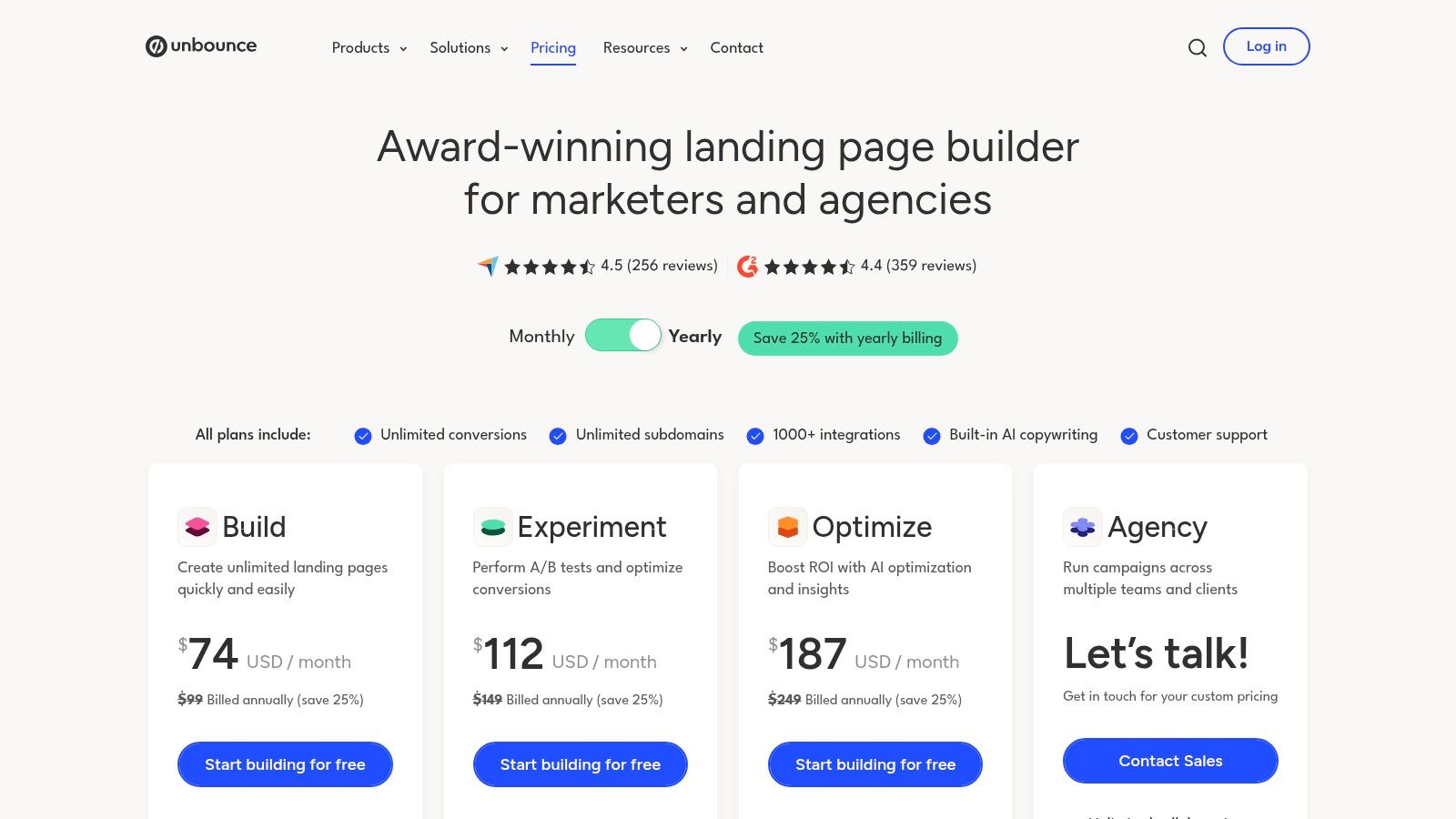
The platform goes beyond just pages, offering pop-ups and sticky bars to capture leads across any website. Higher-tier plans introduce AI-powered Smart Traffic, which automatically directs visitors to the page variant most likely to convert for them, optimizing performance on the fly. While it excels at on-site conversion, it's not an outbound tool and lacks data enrichment features. Pricing is based on traffic and conversion volume, so costs will scale alongside your success, making it one of the best lead generation tools for performance marketers.
| Feature Highlights | Best For | Pricing |
|---|---|---|
| Drag-and-drop builder with over 100 templates | Marketers needing to quickly launch and test campaign-specific landing pages. | Starts at $74/mo |
| Unlimited landing pages, pop-ups, and sticky bars | Maximizing conversion opportunities from existing website traffic. | (billed annually) |
| AI Smart Traffic optimization (Optimize plan) | Businesses looking to automate conversion rate optimization for paid traffic. | |
| Website: | https://unbounce.com/pricing/ |
11. G2 – Lead Generation Software Category
Instead of being a singular tool, G2's Lead Generation Software category is a marketplace that empowers you to find the right tool for your specific needs. It serves as a comprehensive discovery platform, aggregating hundreds of the best lead generation tools in one place. By leveraging its vast collection of verified user reviews, feature comparisons, and satisfaction scores, you can perform side-by-side evaluations to see how different platforms stack up based on real-world user experiences rather than just marketing claims.
The platform's true value lies in its granular filtering options, allowing you to narrow down choices by company size, pricing models, and specific features. This helps you create a shortlist that aligns with both your budget and technical requirements. While G2 is an invaluable research asset, be aware that sponsored listings appear at the top, and it's wise to cross-reference pricing information directly with vendor sites, as it can sometimes be outdated. It's a great starting point for understanding your options before diving into your own lead generation best practices.
| Feature Highlights | Best For | Pricing |
|---|---|---|
| Category filters by company size, features, & pricing | Teams conducting in-depth, comparative research on software options. | Free to use. |
| Verified user reviews and satisfaction scores | Evaluating real-world performance and user satisfaction. | |
| Pricing snapshots and detailed buyer’s guides | Creating a shortlist of tools that fit your budget and needs. | |
| Website: | https://www.g2.com/categories/lead-generation |
12. Salesforce AppExchange – Marketing/Lead Capture Apps
For organizations already embedded in the Salesforce ecosystem, the AppExchange isn't just a marketplace; it's an essential extension of their CRM. It offers a curated collection of hundreds of marketing and lead capture applications designed for seamless, native integration. This eliminates the common friction of connecting third-party tools, as apps installed from the AppExchange can directly create, route, and enrich leads within Salesforce, making it one of the best lead generation tools for maximizing an existing Salesforce investment.
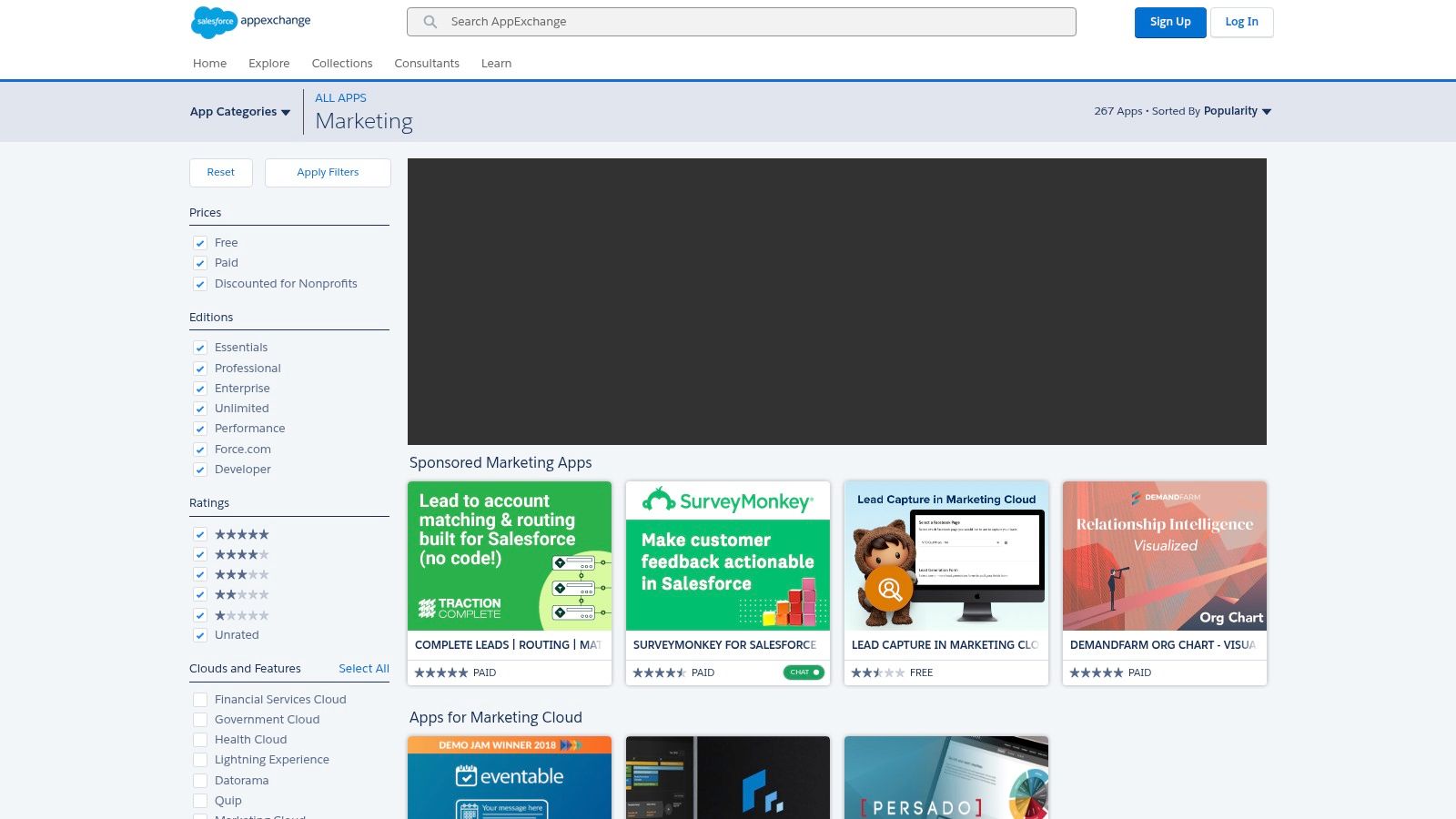
The platform's value lies in its centralized governance and procurement. Teams can find, trial, and purchase vetted solutions for everything from chat and events to data enrichment, all within a familiar environment. Users can filter by Salesforce edition, price, and compliance to find the perfect fit. While this provides unparalleled integration for Salesforce users, the value is diminished for those outside the ecosystem, and app quality can vary, so careful review of ratings and piloting is highly recommended.
| Feature Highlights | Best For | Pricing |
|---|---|---|
| Hundreds of pre-vetted, installable marketing apps | Teams already using Salesforce seeking native integrations. | Varies by app. |
| Deep CRM hooks for lead creation, routing, & attribution | Centralizing lead data and streamlining sales handoffs. | Free & paid apps. |
| Filters by Salesforce edition, price, and ratings | Finding compatible and trusted lead generation solutions. | |
| Website: | https://appexchange.salesforce.com/category/marketing/ |
Lead Generation Tools Feature Comparison
| Product | Core Features / Capabilities | User Experience / Quality Metrics | Value Proposition | Target Audience | Price Points |
|---|---|---|---|---|---|
| EmailScout | Unlimited free email searches, AutoSave, URL Explorer | User-friendly, one-click email discovery | Free unlimited searches, affordable premium | Marketers, sales pros, freelancers | Free; Premium from $9/mo |
| HubSpot – Marketing Hub + Breeze | Marketing automation, CRM, lead scoring, enrichment add-on | Scalable platform with rich resources | All-in-one marketing & sales platform | Growing businesses, enterprises | Free tier; paid tiers scale with contacts/seats |
| LinkedIn Sales Navigator | Advanced search, AI insights, warm intro visibility | Largest B2B network, up-to-date data | Direct outreach with warm intros | Sales teams targeting B2B prospects | Subscription-based, tiered pricing |
| ZoomInfo – SalesOS | Large contact database, buyer intent, org charts, CRM sync | Enterprise-grade data & integrations | Comprehensive data for ABM & SDR workflows | Mid-market & enterprise sales teams | High cost, negotiated pricing |
| Apollo.io | Prospecting database + sales engagement tools | Clear upgrade paths, integrated data & engagement | Data plus email sequencing and dialer | SMBs, mid-market sales teams | Free tier; paid plans with credits |
| Lusha | Credit-based email & phone reveals, Chrome extension | Easy start with free credits, team controls | Simple credit model with CRM integrations | Small to medium teams | Free plan; paid credits monthly |
| Hunter.io | Email discovery, verification, outreach sequences | Transparent pricing, improves deliverability | Email-first prospecting with verifier | Email prospectors, small businesses | Credit-based, yearly bundles |
| RocketReach | Email & phone lookup, bulk export, API, CRM integrations | Competitive per-contact cost, simple credit model | Ad-hoc enrichment focused on emails & phones | Teams needing quick data access | Credit-based, no rollover |
| lemlist | Multichannel sequences; LinkedIn, calls, deliverability tools | Strong email deliverability, personalization features | Balances automation with personalization | Outreach teams focused on cold campaigns | Paid plans, limited free tier |
| Unbounce | Landing pages, pop-ups, AI traffic optimization | Fast launch without coding, clear traffic limits | Conversion optimization platform | Marketers focusing on lead capture | Paid plans based on traffic volume |
| G2 – Lead Generation Software | User reviews, comparisons, buyer guides | Fresh user insights, extensive vendor info | Marketplace for lead-gen software evaluations | Software buyers & decision makers | Free |
| Salesforce AppExchange | Salesforce compatible lead capture & enrichment apps | Native integrations, centralized procurement | Extensive app ecosystem for Salesforce users | Salesforce users & admins | Free and paid apps available |
Choosing the Right Tool to Fuel Your Pipeline
Navigating the vast landscape of lead generation software can feel overwhelming, but the journey to finding the perfect solution starts with a clear understanding of your unique business needs. This comprehensive review of the best lead generation tools demonstrates that there is no single "best" platform, only the one that is best for you. The ideal choice hinges on your specific goals, the scale of your operations, and how a new tool will integrate into your existing technology stack.
We've explored a wide spectrum of solutions, from all-encompassing platforms like HubSpot and ZoomInfo that offer end-to-end sales and marketing intelligence, to highly specialized tools. For instance, Unbounce excels at converting website traffic through optimized landing pages, while lemlist revolutionizes cold outreach with personalized, multi-channel campaigns. Similarly, platforms like LinkedIn Sales Navigator are indispensable for B2B teams focused on relationship-building and social selling.
How to Make Your Final Decision
Your primary bottleneck should be your guiding star. Is your team struggling with finding accurate contact data? Tools like Apollo.io, Lusha, or RocketReach are designed to solve precisely that problem. Are you focused on scalable email verification and prospecting without a hefty price tag? A powerful, user-friendly tool like EmailScout delivers exceptional value.
Before committing to any platform, consider these critical factors:
- Integration Capabilities: How well will the tool connect with your current CRM, email marketing software, and other essential systems? A seamless integration prevents data silos and streamlines your workflow.
- Scalability: Will this tool support your growth? Look for pricing plans and feature sets that can evolve with your team as you expand your lead generation efforts.
- User Experience (UX): A powerful tool is useless if your team finds it difficult to use. Prioritize platforms with an intuitive interface to ensure high adoption rates and a quick return on investment.
- Total Cost of Ownership: Look beyond the monthly subscription fee. Factor in any implementation costs, training requirements, and potential add-ons to understand the full financial commitment.
Your Next Steps to a Fuller Pipeline
The most effective way to validate your choice is through direct experience. Nearly every tool on this list offers a free trial or a limited free plan. Use these opportunities to test the core functionalities that matter most to your team. Assign a small pilot project to a few team members and gather their honest feedback on the workflow and the quality of the results.
Ultimately, the best lead generation tools are not just software; they are strategic investments that empower your team to work smarter, not harder. By carefully aligning a tool's strengths with your specific challenges, you can build a robust, predictable, and high-quality sales pipeline that fuels sustainable business growth.
Ready to kickstart your prospecting with unmatched accuracy and efficiency? EmailScout provides a powerful and affordable solution for finding and verifying professional email addresses, making it one of the most accessible and effective lead generation tools for teams of all sizes. Start for free on EmailScout and see how quickly you can build your ideal prospect list.


